In southern Portugal, the Trilho dos Pescadores attracts on the Atlantic coast. From village to village, the “Fishermen’s Path” winds its way along steep cliffs and dreamy beaches over more than 200 kilometres. TRAVELBOOK shows what there is to see and what to consider along the way.
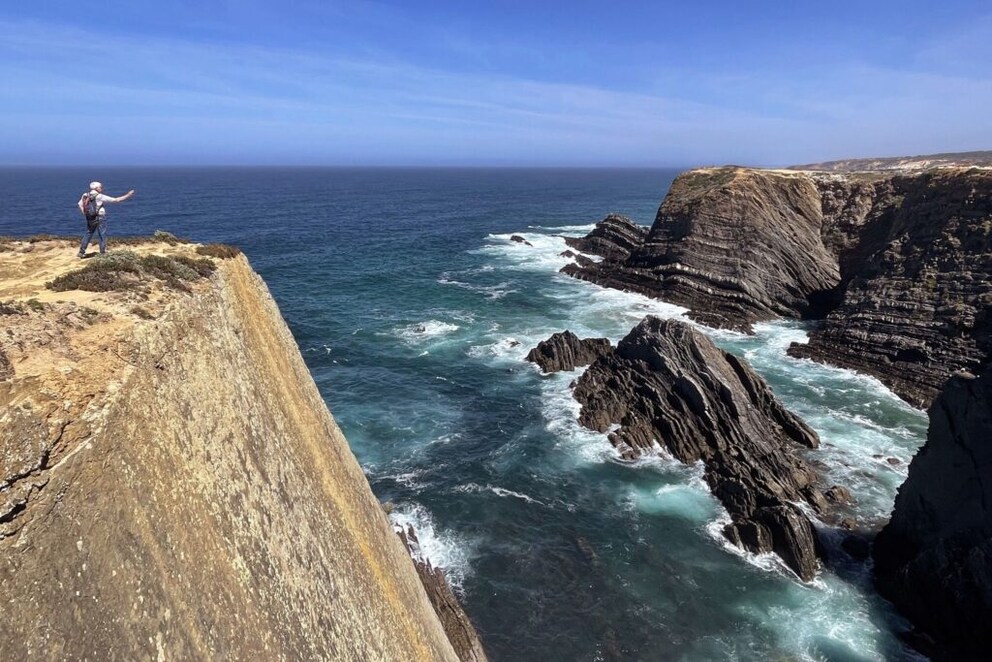
One thing is already clear after the first day of hiking the Trilho dos Pescadores: this trail along Portugal’s Atlantic coast in the Alentejo is not for beach lovers. They would suffer, they would hardly advance. Already on the long sandy beach of São Torpes south of the coastal resort of Sines, one of the starting points of the route, you actually wish you could play in the waves or sunbathe for hours instead of putting on your backpack and starting walking.
Praia de Morgavel, Praia do Burrinho, Praia da Samoqueira: hikers pass through all these lonely bays and picture-book beaches on the starting stage for Porto Covo. Passing in front of it is almost impossible, yet there is no alternative: there are no overnight stays among the few fishing villages that punctuate the daily stages.
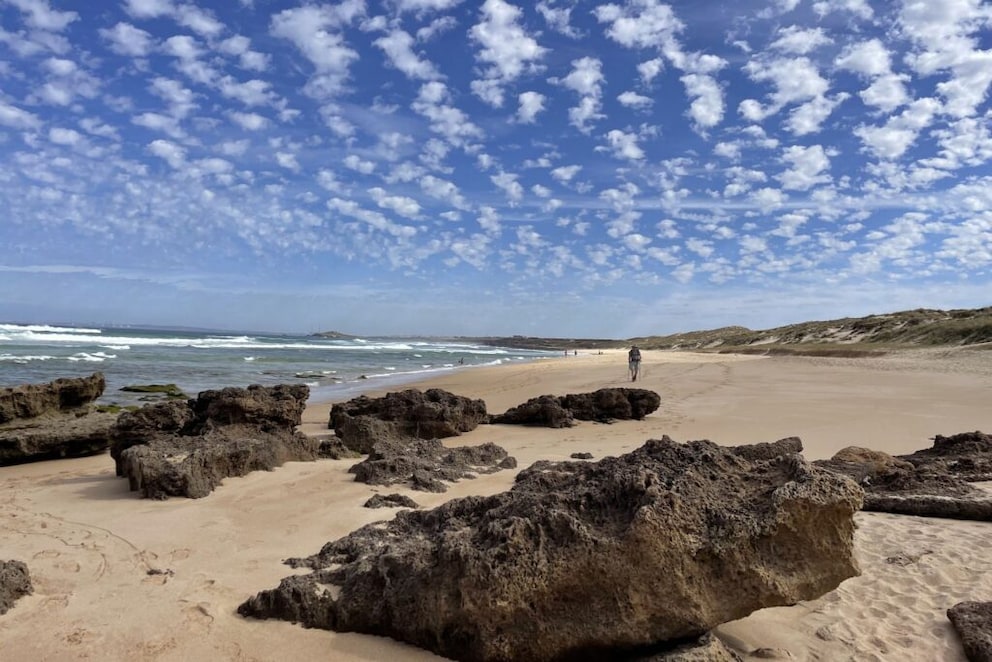
Good waves and hardly any surfers in the water
Surfers should also avoid the “Trilho dos Pescadores” if possible, jokes Lukas Pauluhn from Würzburg. For the past two weeks he has been driving with a friend in a mobile home along the Atlantic coast between Porto Covo and the Cape of São Vicente at the southwestern tip of Portugal.
“Here are simply the best surfing hotspots in Europe. You have good waves all year round and there are hardly any surfers in the water. And look at this deserted dream beach,” he says, pointing from the cliff where they spend the night in their mobile home to the surfer beach of Malhão, south of Porto Covo.
Surfers who want to do trail riding must really have a bit of a masochistic streak. And they also need to be able to withstand this psychological strain along the way. Because the thunder of the Atlantic breakwaters is a constant companion along the entire fishing route, as the route always leads directly over cliffs, through dunes and sometimes even onto sandy beaches.
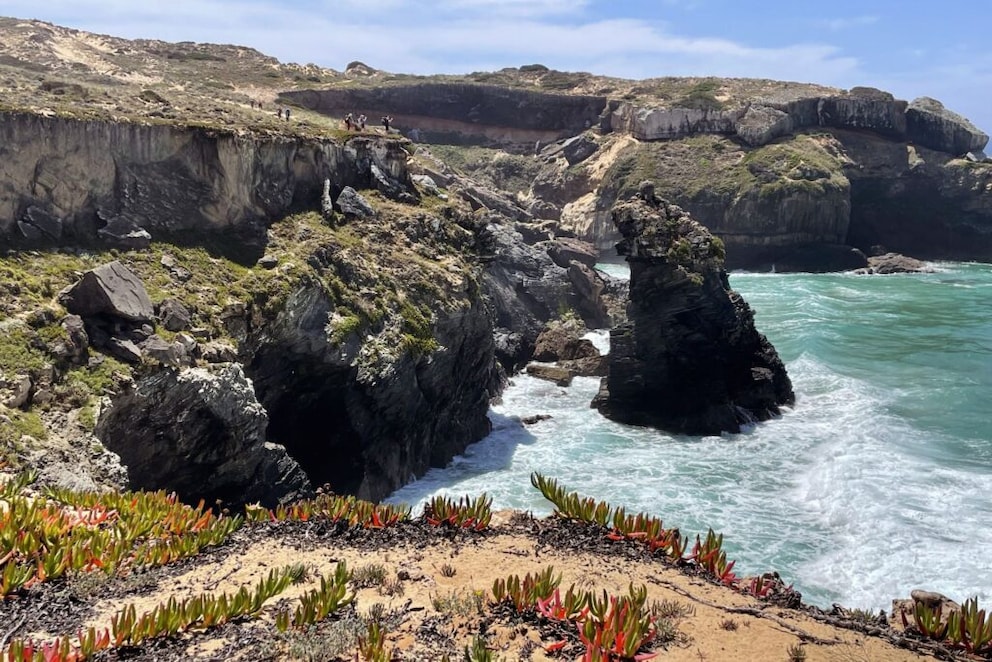
Nothing for those afraid of heights
“You’re really walking by the sea all day,” says Carmelo, a retiree from Huesca, Spain. That’s a good thing, because there’s hardly any shade on the course. At least the fresh sea breeze will cool you down a bit. The fisherman’s path winds mainly through the Sudoeste Alentejano and Costa Vicentina Natural Park. You walk along centuries-old paths that fishermen and barnacle collectors from the villages still follow today to travel along the coast.
Sometimes Carmelo, however, the narrow sand paths are too close to the cliffs, some of which are up to 30 meters high. “You shouldn’t be afraid of heights on this trail,” Carmelo says. He and his wife Adelina may want to walk the entire Fishermen’s Trail to Lagos on the Algarve coast, a distance of 216 kilometers spread over 13 stages. They haven’t decided yet when we will meet. One thing is certain: you are enthusiastic.
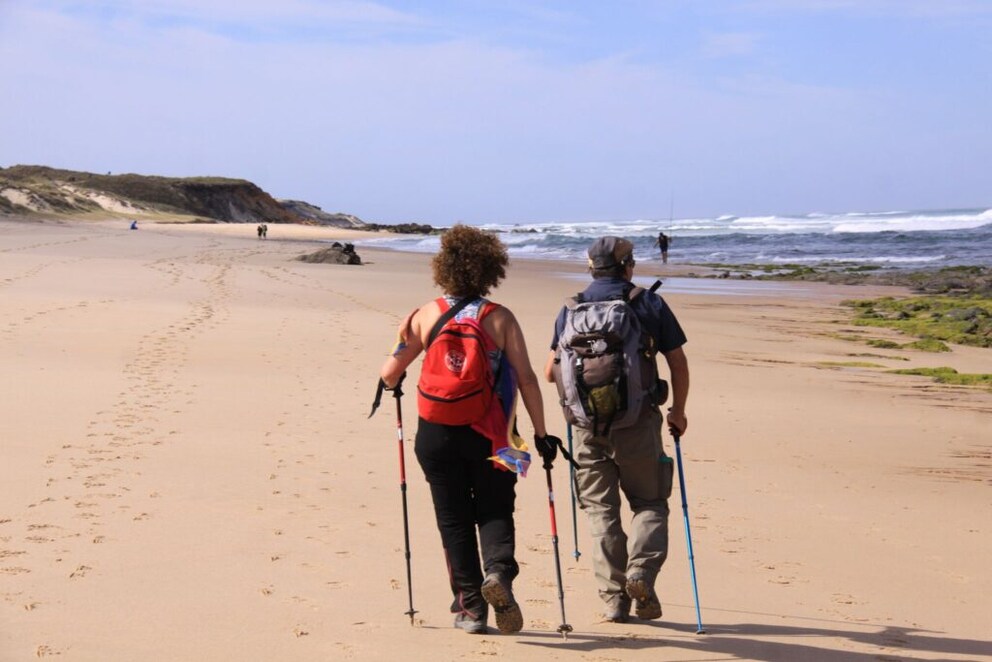
From surfer’s beach to towering cliffs
After the surfing beach of Malhão, the path leads into an untouched dune landscape. The landscape changes. The beaches give way to mighty cliffs all the way to Vila Nova de Milfontes. The day ends with a refreshing dip in the Mira River and local specialties and wines at Tasca do Celso, a rustic wine-gastrobar in Vila Nova de Milfontes. This coastal village attracts attention with its white houses and the Forte São Clemente, built directly on the water.
Below the castle you can cross the river on a small ferry and save yourself the longer journey across the inner bridge. The following day’s stage to Almograve is relatively short at 15km, but no less beautiful. After the river, it first passes through cork oak forests. Later in the dunes, the midday flowers glow with yellow and pink, the prickly thrifty with soft purple. Cistus, juniper and rosemary smell along the way until the path leads above the Praia do Brejo Largo, the next dream beach, framed by wildly overgrown rocks.
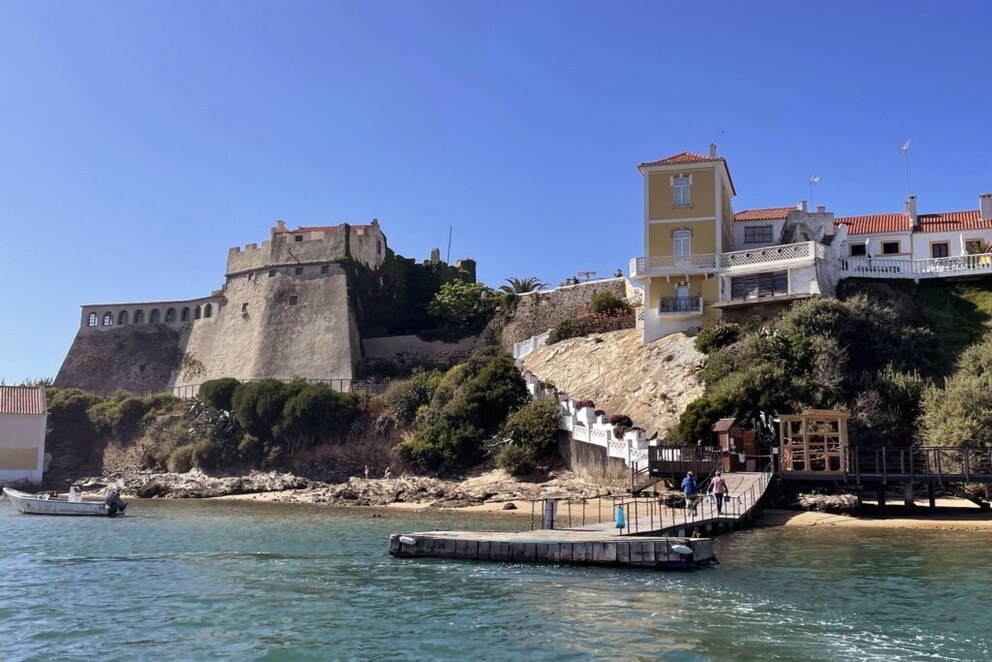
Also interesting: Which Ways of St. James in Spain are suitable for whom
Storks in the sticks of rock
The following day: you pass the small fishing port of Lapa das Pombas, after which the dunes turn red, yellow and white. The rocky landscape becomes increasingly furrowed. On the steep cliffs near the Cabo Sardão lighthouse, storks nest on the narrow rock ledges that extend out to sea. The Stonechats also live here: their song accompanies you throughout the day.
The trail branches off to the Herdade do Touril rural hotel, where a saltwater pool and hearty local food will revive our weary bodies. From here it is not far to Zambujeira do Mar. The white coastal village sits enthroned on a cliff.
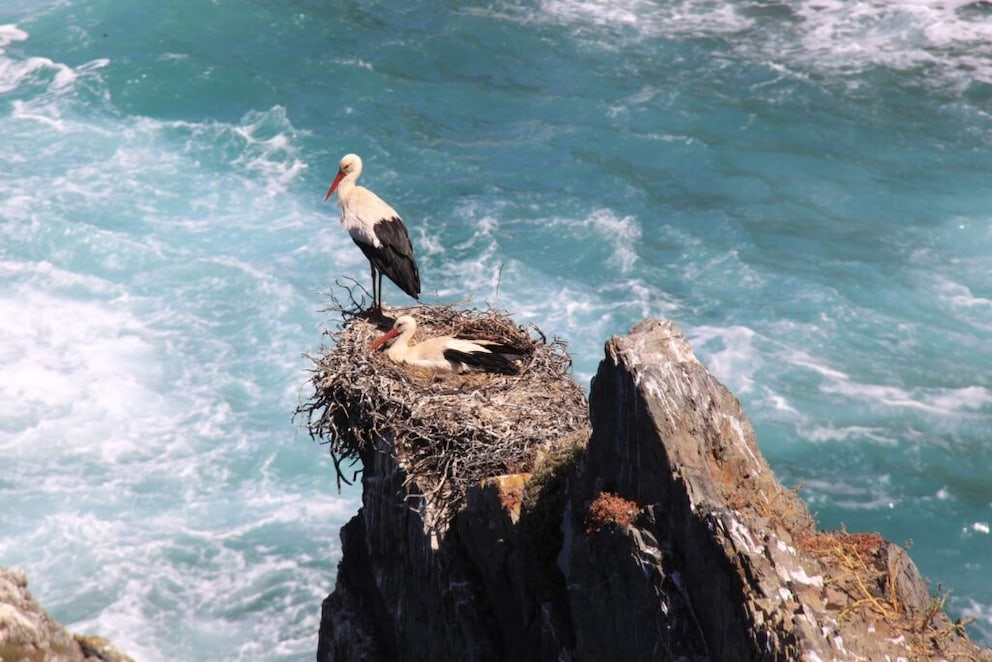
A dip in the waves of the Atlantic
The morning fog makes the cliff landscape even more mystical on the way to Odeceixe the following day. After a few kilometres, the hunting reserve with ostriches and zebras, passed by the path, seems surreal. Several bathing bays line the road to the fishing village of Azenha do Mar. Now it won’t take long to reach the Ponta em Branco viewpoint with its panoramic view of – how could it be otherwise: a beautiful beach. The part of the Trilho dos Pescadores that crosses the Alentejo region ends at the Praia de Odeceixe.
Here you have gone about half the way. If you like, you can continue hiking and follow the Algarve coast all the way to Lagos. Or put down your backpack and take a dip in the waves of the Atlantic. And if that’s too much for you, you can walk a few meters over the sandbar to the quieter side of the river, where the Ribeira de Seixe laps the beach from behind before flowing into the sea.
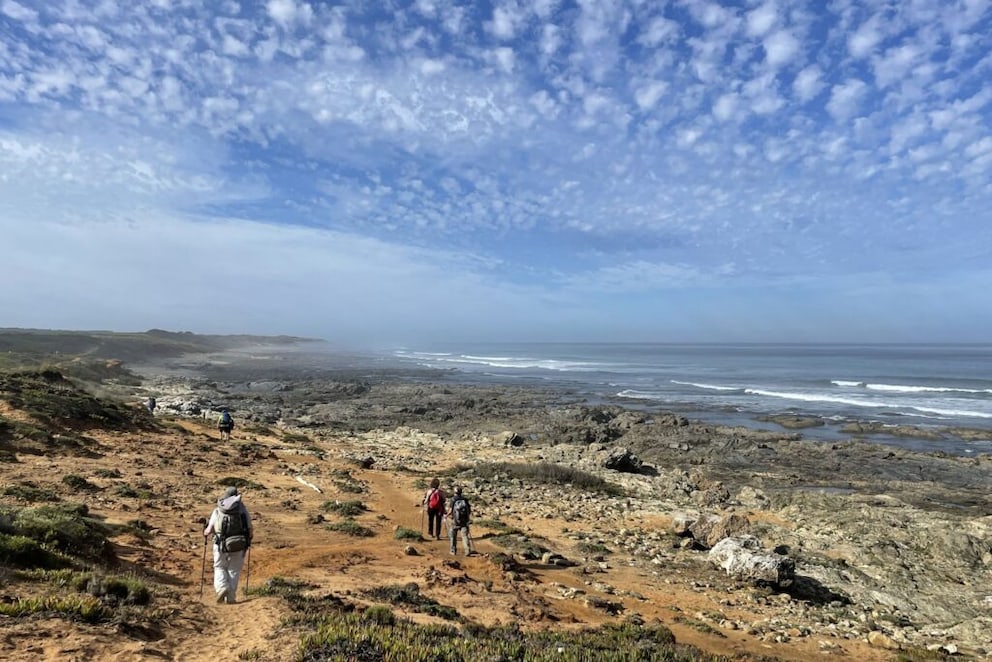
More information on the Trilho dos Pescadores
getting there
Several airlines such as Lufthansa or TAP fly to Lisbon from Germany. From here it takes about two hours by bus or rental car to Sines or Porto Covo.
path
The Sentiero dei Pescatori is a relatively easy and well signposted coastal path. But walking on the sand is exhausting. You should be confident and not afraid of heights. There is also an official luggage transport service www.vicentinatransfers.pt/en
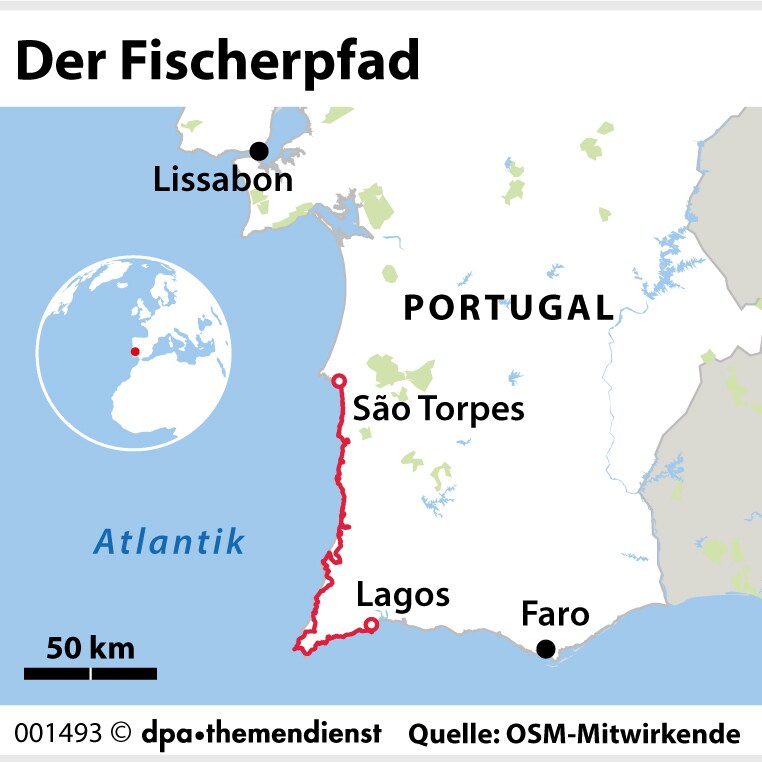
Route information, accommodation and restaurants a
Best travel time
The Fischerpfad can be walked on all year round. April to June and September to November are ideal for hiking.
With material from dpa




